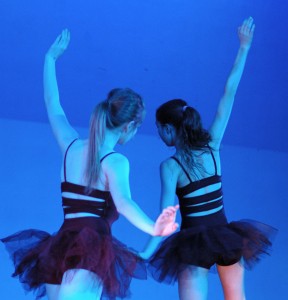Happy November (again!) –
We’re pleased to to share with you an article on the relationship between outside-of-class-fitness-training and dance performance. You may remember we’ve had a number of articles on this topic, and how important it is for dancers to do more than just take class / rehearsal, if they want to stay as healthy as possible and lower their risk of injury.
Our contributor for this piece is Dr. Matthew Wyon, who is Professor of Dance Science at the University of Wolverhampton (England), where he divides his time between the Sport and Dance Departments. He is on the Medical Advisory Committee of Dance UK, and as a certified strength and conditioning specialist works as exercise physiologist for Birmingham Royal Ballet and The English National Ballet. As one of the leading researchers in dance medicine and science, he is also the incoming President-elect / Vice-President of IADMS (International Association for Dance Medicine and Science). I’m so glad he agreed to write something for us, and happy we can share this with you……just one more piece of evidence on why dancers need to do outside-of-class conditioning! Mahalo, Matt! (that’s Hawaiian for “thank you”!)
Best to all!
Jan, Editor, Dance Wellness
_______________________________________
Is dance class and rehearsal enough to get you fit to perform? Should you also do other fitness training as well? The link between physical fitness and performance has been demonstrated in sport, where winners are often physically fitter than their rivals. Dance UK’s two “Fit to Dance” reports noted that dancers said fatigue was one of the main causes of injury. The research we have carried out at the University of Wolverhampton examined whether there was a similar relationship between fitness and dance, as there is in sport. Specifically, are dancers able to improve the artistic elements of dance performance by improving their underlying physical fitness?
A recent study has shown that judges gave higher grades to fitter dancers dancing the same piece of choreography than less fit dancers. The study used professional dancers and final year vocational school dancers in a performance group. Each group (ballet and contemporary) performed a solo-piece before and after a 6 week training period and carried out the same fitness tests. Half of each genre group did an extra 1 hour fitness class a week while the others just did their normal routine. The fitness training consisted of circuit training and whole body vibration training on a PowerPlate. The circuit training exercises chosen focused on upper and lower body exercises (such as press-ups, lunges, bench dips), as well as development of the aerobic energy system. Each group also carried out exercises that focused on developing active and passive flexibility.
Results showed that all dancers who were part of the intervention (i.e, the fitness regimen) group improved their artistic marks significantly more than the control groups (the ones who did not do the fitness regimen).
The study has also shown that as long as supplemental training is focused, benefits can be achieved in a short period of time, which is vital within the training and rehearsal schedules of today’s dancers.
Professor in Dance Science, Research Centre for Sport Exercise and Performance, University of Wolverhampton, UK
National Institute of Dance Medicine and Science, UK











